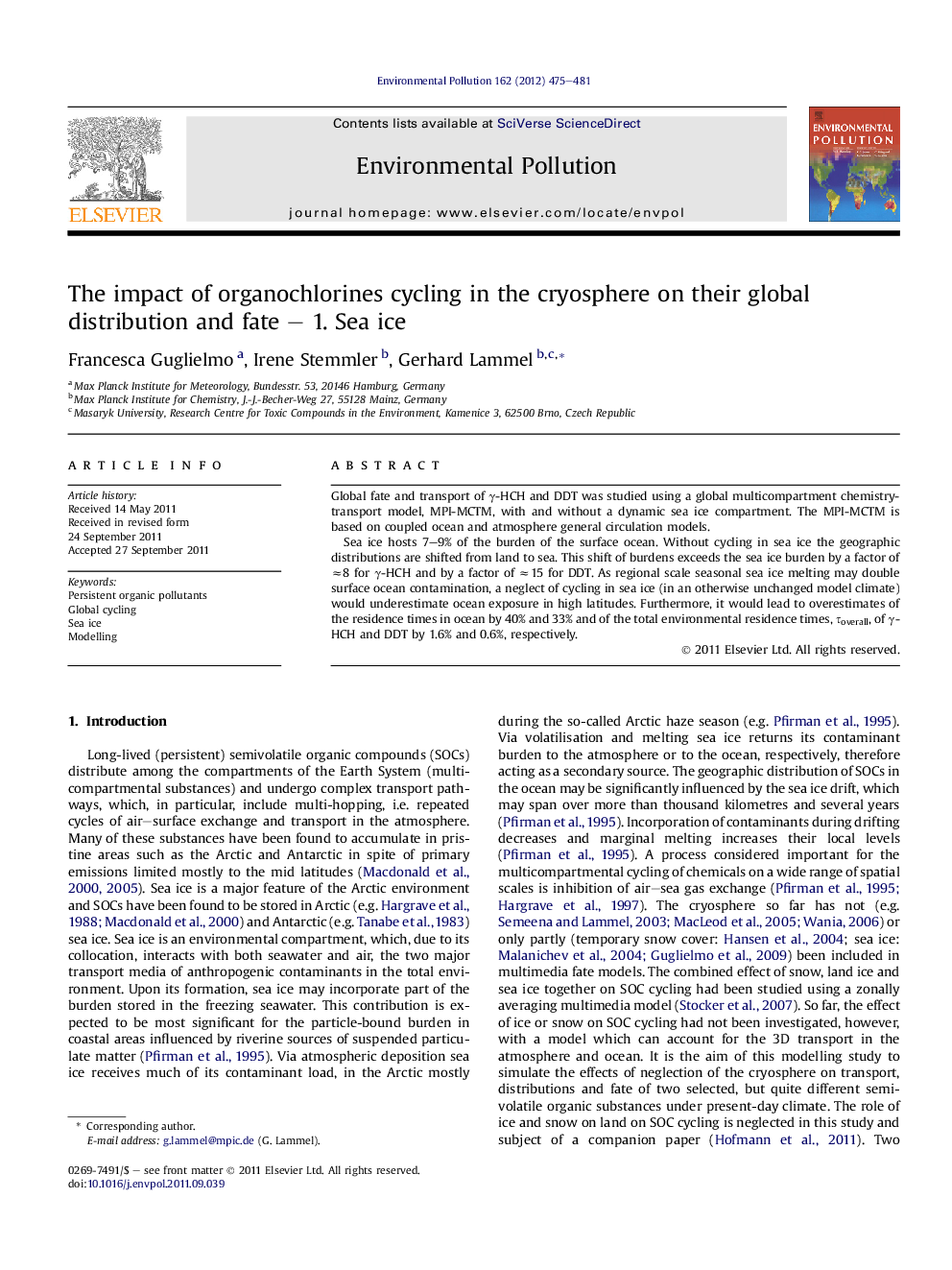| Article ID | Journal | Published Year | Pages | File Type |
|---|---|---|---|---|
| 4425007 | Environmental Pollution | 2012 | 7 Pages |
Global fate and transport of γ-HCH and DDT was studied using a global multicompartment chemistry-transport model, MPI-MCTM, with and without a dynamic sea ice compartment. The MPI-MCTM is based on coupled ocean and atmosphere general circulation models.Sea ice hosts 7–9% of the burden of the surface ocean. Without cycling in sea ice the geographic distributions are shifted from land to sea. This shift of burdens exceeds the sea ice burden by a factor of ≈8 for γ-HCH and by a factor of ≈15 for DDT. As regional scale seasonal sea ice melting may double surface ocean contamination, a neglect of cycling in sea ice (in an otherwise unchanged model climate) would underestimate ocean exposure in high latitudes. Furthermore, it would lead to overestimates of the residence times in ocean by 40% and 33% and of the total environmental residence times, τoverall, of γ-HCH and DDT by 1.6% and 0.6%, respectively.
► Sea ice hosts 7–9% of the burden of γ-HCH and DDT in the surface ocean. ► Without cycling in sea ice the distributions are shifted from land to sea. ► A neglect of cycling in sea ice would underestimate ocean exposure in high latitudes. ► Persistence of γ-HCH and DDT expected enhanced in climate without sea ice.
